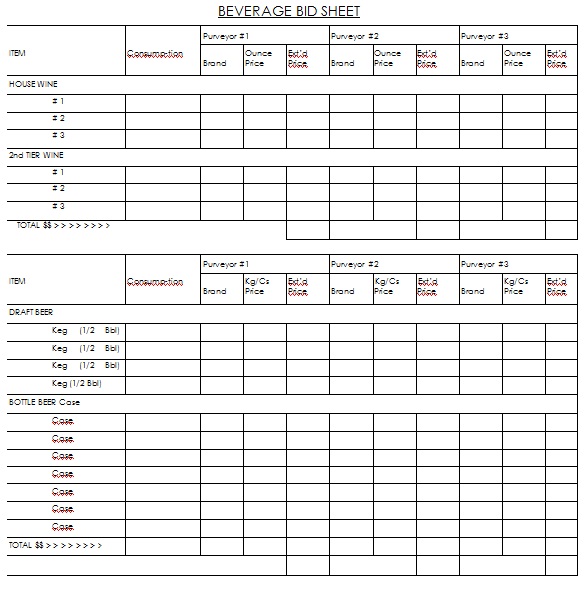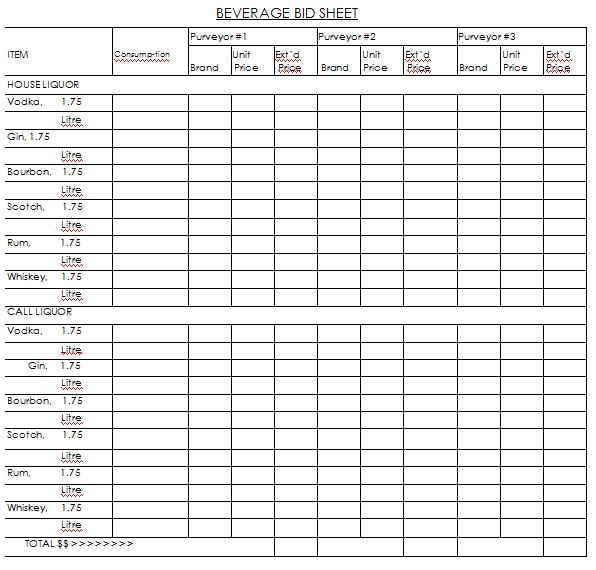Beverage Ordering Procedure for Hotels and Restaurants
Hotels & Restaurants follow effective beverage ordering procedure as outlined below to minimize capital investment in beverage inventories, to maintain adequate supplies of beverage product and to aid in controlling beverage costs.
Beverage Ordering Procedure :
ORDER PLANNING
1. One day per week (the same day each week) should be designated to plan and estimate beverage needs for the upcoming week.
2. To keep inventory levels to a minimum, beverage products should be ordered and received as frequently as is reasonable. If state regulations and vendors allow, suggested delivery frequency is as follows:
Liquor and Wine > 2 times per week
Beer > 3 times per week
All Beverage orders should be based on established pars, plus banquet needs for the upcoming week. Banquet needs should be estimated based on actual B.E.O. requirements.
BEVERAGE PARS for Beverage Ordering Procedure
3. Beverage “par” levels should be established to allow operation at “normal” business levels without product shortage, while at the same time minimizing capital invested in inventories.
4. Par levels should be based on historical consumption data, preferably over a time span of at least three accounting periods. Total consumption should be averaged to obtain “normal” weekly consumption.
5. After calculating the average weekly consumption, you must analyze the available frequency of product delivery or pick up, and available labor to determine the most cost effective par level.
6. In general, your par levels should be set so as to allow normal operation for one delivery period or one week, whichever is less. However, some slower- moving items such as cork finished wines, special liquors and liqueurs will require more than the minimum par due to availability and minimum unit of purchase.
7. Beverage pars should include only minimum allowances for small, routine banquet functions. All other banquet beverage items should be purchased as needed based on B.E.O. requirements.
8. Par levels must be analyzed at least quarterly. Any significant changes in consumption patterns will require a corresponding adjustment in par levels.
VENDOR PRICING for Beverage Ordering Procedure
9. In India where beverage products are available from more than one vendor, competitive bids should be secured monthly for all applicable items. In many cases, actual bids will be unnecessary because all vendor pricing will be listed in a regional or state “Beverage Journal”. In these areas, the Beverage Manager should assemble a vendor price comparison utilizing information published in the “Beverage Journal”. Comparisons should include all approved “house pour” products as well as call brands showing significant consumption.
10. In most competitive environments, significant discounts can be obtained for quantity purchases, and also when you agree to carry a number of brands available from one particular company or vendor. You should take prudent advantage of available discounts, keeping beverage inventory turnover requirements in mind.
11. You should also be constantly alert to monthly vendor “post offs” and discounts to properly position your inventory to take advantage of these as much as possible.
12. A “Beverage Bid Sheet” form is used to facilitate the comparison and analysis process.







